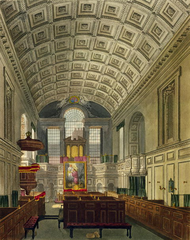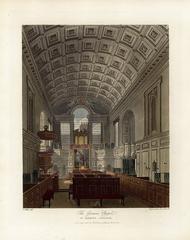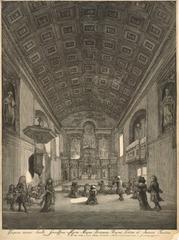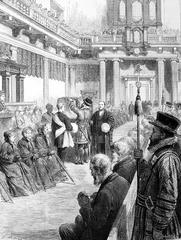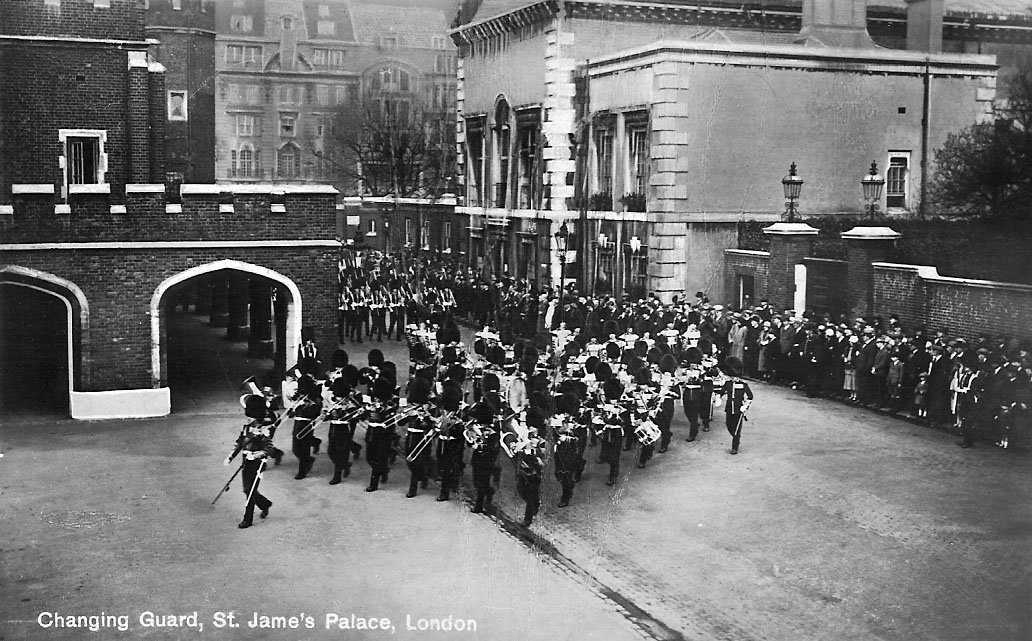
Queen’s Chapel Visiting Hours, Tickets, and London Historical Sites Guide
Date: 14/06/2025
Introduction: Queen’s Chapel – A Royal and Architectural Gem
Nestled beside St James’s Palace in the heart of London, the Queen’s Chapel stands as an enduring testament to the city’s royal, religious, and architectural heritage. Commissioned in 1623 for Queen Henrietta Maria, the Catholic wife of King Charles I, this chapel was both a bold religious statement and a pioneering work of English classical architecture. Designed by Inigo Jones, England’s first prominent classical architect, the Queen’s Chapel introduced Palladian style to Britain, blending Italian Renaissance principles with English traditions.
Today, the Queen’s Chapel remains a “royal peculiar”—a church under the direct jurisdiction of the monarch—primarily used for select Sunday services from Easter through the summer months. Its limited public access and rich historical tapestry make it a hidden jewel for history enthusiasts, architecture lovers, and anyone seeking a deeper connection with London’s royal past. This guide provides detailed insight into its history, architecture, visiting hours, ticketing, accessibility, and nearby attractions, helping you plan an unforgettable visit.
For the latest and most authoritative information, consult the Royal Family website and the Historic England listing.
Table of Contents
- Historical Overview
- Visiting the Queen’s Chapel
- Frequently Asked Questions (FAQ)
- Conclusion
- References and Further Reading
Historical Overview
Origins and Early Purpose
The Queen’s Chapel was conceived during a turbulent era for English religion and politics. Construction began in 1623, initially linked to marriage negotiations between Prince Charles (later Charles I) and the Spanish Infanta. However, it became the private chapel for Queen Henrietta Maria after Charles married her in 1625. At a time when Catholic worship was heavily restricted in England, the chapel’s creation was a rare and controversial concession, stirring public unrest and symbolizing the queen’s influence at court (Historic England; Unofficial Royalty; Wikipedia).
Architectural Significance
Designed by Inigo Jones, the Queen’s Chapel is a pioneering example of classical architecture in Britain. The building’s simple rectangular form, Portland stone dressings, and elegant pedimented windows reflect Jones’s Palladian inspiration. Inside, the chapel features an elliptical, gilded, and painted coffered vault, original 17th-century woodwork, and the Royal Pew in the west gallery—elements that have endured through centuries of royal use and restoration (Historic England; Living London History).
Shifting Religious Roles
The chapel’s history mirrors England’s evolving religious landscape. During the English Civil War, it was repurposed as a barracks and stable. After the Restoration, it resumed Catholic worship for Charles II’s queen, Catherine of Braganza. Following the Glorious Revolution of 1688, the chapel was reoriented for Protestant use, serving first French Huguenots and later German courtiers, thus gaining the nickname “German Chapel” (Unofficial Royalty; London Remembers).
Later Modifications and Restoration
A fire in 1809 destroyed the palace wing connecting the chapel to St James’s Palace, and the 1856–57 construction of Marlborough Road further isolated it. The chapel underwent significant restoration from 1938 to 1951, interrupted by WWII, after which it regained its original name and continued as part of the Chapel Royal (Wikipedia; Living London History).
Modern Role and Notable Events
Today, the Queen’s Chapel is an active place of worship and occasional venue for royal ceremonies. Notably, it was used as the resting place for Queen Elizabeth The Queen Mother before her 2002 funeral, providing a private space for royal mourning (Wikipedia).
Artistic and Cultural Features
Highlights include the gilded vault, a stained glass window by John Napper commemorating Queen Elizabeth II’s Golden Jubilee, and historic memorials such as the coffin plate of Mary of Modena. The chapel’s restrained yet refined décor reflects its origins as a Catholic place of worship and its subsequent adaptations (Living London History; Royal Central).
Heritage Status
The Queen’s Chapel is Grade I listed, ensuring its preservation as a site of exceptional historic and architectural importance (Historic England).
Visiting the Queen’s Chapel
Visiting Hours and Tickets
Public Access:
The Queen’s Chapel is generally not open for daily sightseeing. Instead, it welcomes the public for Sunday services from Easter until July or during special events and heritage open days (Royal.uk; Lonely Planet).
- Service times: Usually 10:30 or 11:00 AM; check the official schedule for updates.
- Tickets: Entry is free during services. When open for special events, tickets may be required and should be reserved in advance.
- General visits: The chapel is closed outside of service times except during rare guided tours or London Open House events.
Accessibility
- Location: Marlborough Road, adjacent to St James’s Palace, London.
- Transport: Easy access via Green Park or St James’s Park Underground stations; several bus routes nearby.
- Wheelchair access: Flat paths lead to the entrance, but some interior areas may have steps or uneven floors. Contact the Royal Collection Trust for specific accessibility arrangements.
Travel Tips and Nearby Attractions
- Combine your visit with St James’s Palace, Buckingham Palace, and St James’s Park for a full royal tour.
- Photography: Exterior photography is permitted. Interior photography is generally prohibited to maintain respect during services.
- Dress code: Modest attire is recommended, especially for services.
- Amenities: No restrooms inside; facilities are available at St James’s Park and nearby attractions.
Frequently Asked Questions (FAQ)
Q: What are the Queen’s Chapel visiting hours?
A: Public access is mainly during Sunday services from Easter to July. Check the official website for details.
Q: Do I need a ticket to visit?
A: No tickets are required for services; special events may require advance booking.
Q: Is the chapel open for tours?
A: Guided tours are rare but may be offered during heritage events or as part of wider royal palace tours.
Q: Is the Queen’s Chapel accessible for wheelchairs?
A: There is level access to the entrance, but some parts of the interior may not be fully accessible. Contact ahead for assistance.
Q: Can I take photos inside?
A: Photography is not permitted inside during services.
Q: Are there nearby attractions to visit?
A: Yes, including St James’s Palace, Buckingham Palace, Green Park, and Westminster Abbey—all within walking distance.
Conclusion
The Queen’s Chapel is a remarkable fusion of religious history, royal tradition, and architectural innovation. Its association with pivotal moments in British history, from royal marriages to state funerals, makes it a uniquely significant site. While public access is limited, planning your visit around Sunday services or special events provides a rare and rewarding experience. Combine your visit with nearby royal landmarks for a comprehensive exploration of London’s regal heritage. Always check official channels for up-to-date visiting hours and ticketing details.
References and Further Reading
- Historic England - Queen’s Chapel Listing
- Unofficial Royalty - Queen’s Chapel
- Wikipedia - Queen’s Chapel
- Living London History - St James’s Palace Chapels
- London Remembers - The Queen’s Chapel
- Royal.uk - St James’s Palace
- Lonely Planet - Queen’s Chapel Visitor Guide
- Royal Central - Queen’s Chapel Feature
- Strawberry Tours - St James’s Palace
For real-time updates on Queen’s Chapel visiting hours and ticket availability, as well as guided audio tours, download the Audiala app. Connect with us on social media for the latest news and in-depth features on London’s royal landmarks.

